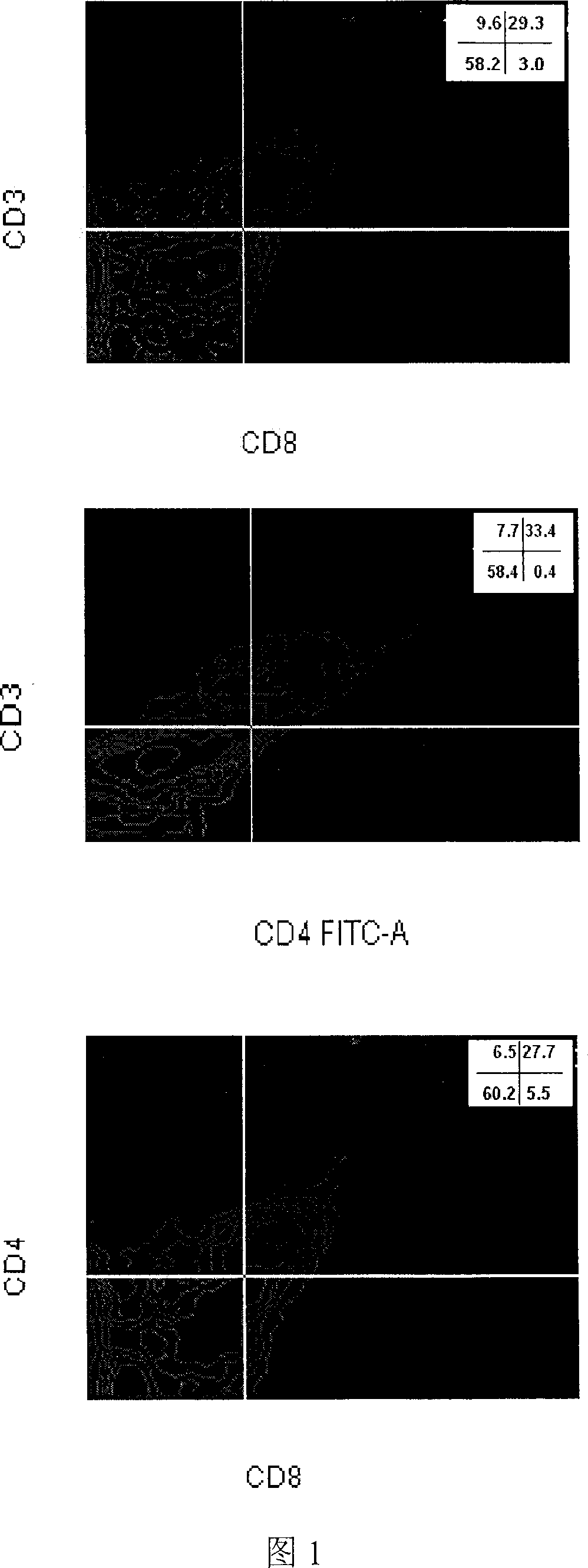Cultivation method for differentiating into T cell of embryonic stem cell and differentiation culture medium
A technology of embryonic stem cells and culture methods, applied in the field of culture of embryonic stem cells differentiated into T cells, can solve the problems of carcinogenesis, teratogenicity, difficulty in clinical application, cell mutation, etc.
- Summary
- Abstract
- Description
- Claims
- Application Information
AI Technical Summary
Problems solved by technology
Method used
Image
Examples
Embodiment Construction
[0022] Materials: Embryonic stem cells (embryonic stem cells, ES cells) are the international common cell line E14.1 and the cell lines SC1001 and SC1002 derived from B6 / 129 established by the inventor's laboratory.
[0023] Instruments mainly include: CO2 incubator, centrifuge, flow cytometer, etc.
[0024] The method for culturing embryonic stem cells differentiated into T cells according to the present invention comprises the following steps:
[0025] A. Preparation of embryoid bodies: Embryonic stem cells were digested into single cells with trypsin and inoculated in high-glucose DMEM medium containing 15% fetal bovine serum for suspension culture for 5-7 days to induce the formation of embryoid bodies.
[0026] The high-sugar DMEM medium is selected from the CAT NO.SH30003.01 product of HYCLONE Company, or similar products of GIBCO Company.
[0027] B. Embryonic bodies are transferred to differentiation culture medium, and described differentiation culture medium is to a...
PUM
 Login to View More
Login to View More Abstract
Description
Claims
Application Information
 Login to View More
Login to View More - R&D
- Intellectual Property
- Life Sciences
- Materials
- Tech Scout
- Unparalleled Data Quality
- Higher Quality Content
- 60% Fewer Hallucinations
Browse by: Latest US Patents, China's latest patents, Technical Efficacy Thesaurus, Application Domain, Technology Topic, Popular Technical Reports.
© 2025 PatSnap. All rights reserved.Legal|Privacy policy|Modern Slavery Act Transparency Statement|Sitemap|About US| Contact US: help@patsnap.com

